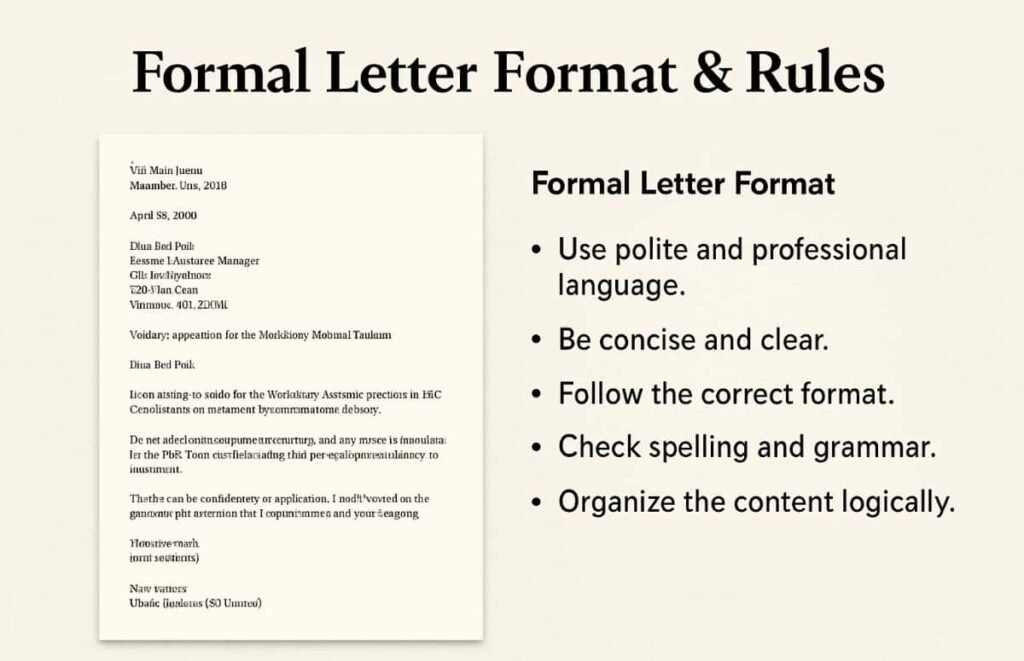Formal Letter For All Classes Of Students: Format, Rules & FAQ

Formal Letter format & Rules, and FAQ
What is a Formal Letter?
A formal letter is an official document written for professional or official purposes. It is used for job applications, official complaints, business proposals, government communication, or academic purposes. A formal letter follows a structured format and uses polite, professional language.
Rules for Writing a Formal Letter
- Use polite and respectful language – avoid slang or informal words.
- Follow the proper format: include the sender, date, recipient, subject, body, and closing.
- State the purpose clearly – mention your reason in the first paragraph.
- Be concise and relevant – avoid unnecessary details.
- Use a professional closing – such as “Yours faithfully” or“Yours sincerely.”
- Check grammar and spelling errors to reduce the letter’s professionalism.
Format of a Formal Letter
[Sender’s Address]
[Date]
[Recipient’s Name & Designation]
[Company/Institution Name]
[Address]
Subject: [Write the subject clearly]
Dear [Recipient’s Name],
Paragraph 1: Introduce yourself and clearly state the purpose of the letter.
Paragraph 2: Give background information or necessary details related to the subject. Keep sentences under 20 words for better readability.
Paragraph 3: Politely request the action you expect from the recipient.
Yours faithfully,
[Your Full Name]
[Your Contact Information]
A formal letter is a professional document written for official purposes, following a specific structure and using polite language.
Common types include job application letters, business letters, complaint letters, cover letters, and official request letters.
It includes the sender’s address, date, recipient’s details, subject, greeting, body paragraphs, closing, and signature.
A formal letter is professional, structured, and uses polite language. An informal letter is casual, personal, and friendly.
Start with a polite greeting such as “Dear Sir/Madam” or the recipient’s name with a title.
End with closings like “Yours faithfully” or “Yours sincerely,” followed by your name and signature.
It ensures clear, respectful, and professional communication in academic or professional settings.
One Comment